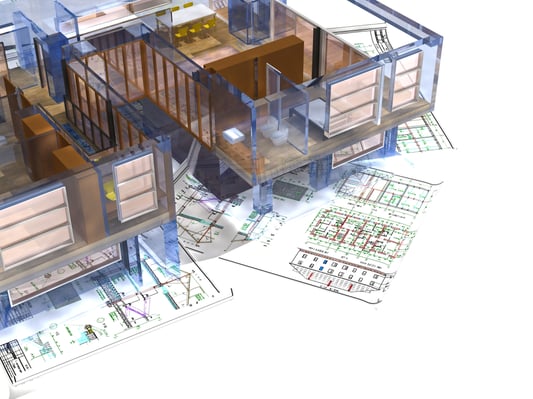Using Data Science in MEP Engineering

Data science has promising applications in business fields, and this includes MEP engineering. Buildings use many systems for functions like space heating, air conditioning, water heating, electric power distribution, ventilation and fire protection. All the equipment and components that compose these systems are potential sources of data when equipped with sensors. Data also has promising applications in research and development: it can be used to develop building technologies that improve performance.
The value of data science lies in processing large volumes of information and extracting useful insights. Since humans cannot process information with the speed of computers, large amounts of raw data have little use by themselves. However, when information is processed with adequate algorithms, it becomes useful for business decisions. Data science can be complemented with graphics and other visual aids to make information even easier to understand.
Find the optimal MEP design for your building project.
In MEP engineering, a promising application of data science is creating a "digital twin" of an existing building. A digital twin can be considered a more advanced version of a BIM model. Typically, a BIM model is finalized with "as-built" information when a project is completed. However, a digital twin constantly updates itself by collecting measurements from the building. This provides a constant stream of data, which can be analyzed to manage the building better.
Using Data to Plan Building Upgrades
The data collected from a building can be used to predict the effects of modifications such as energy retrofits. This way, the building owner can simulate many possible projects in a virtual model, and observe their impact before an investment decision.
In the absence of data, a building upgrade must be planned with outdated documents and visual inspections. Due to the complexity of a building, key pieces of information may be missed even when the inspection is conducted by professionals. Once the building modification project is started, the lack of information may result in change orders and unplanned costs.

During a building upgrade, there are often several upgrade options for the same building system, and many of them are mutually exclusive. Consider the following examples:
- Heating systems can be designed to use a mix of electricity and combustion, or only electricity. The most economic option may vary depending on the local price of electricity, and the availability of natural gas and other fuels.
- HVAC systems can use different heat-transfer fluids to deliver or remove heat inside a building. Direct expansion systems use air ducts, hydronic systems use water piping, and VRF systems use refrigerant flow. The best option may vary depending on the conditions of each project.
With so many variables to analyze, finding the best upgrades for a building is a technical challenge. However, the use of data science in MEP engineering allows a much quicker decision. Comparing many designs with spreadsheets and conventional CAD software can take plenty of time, which is not always available.
Data science can also be used to analyze behaviors that are invisible for humans. For instance, a promising application of data science is energy disaggregation: breaking down the electricity consumption of power meters to estimate the individual consumption of each device. Energy disaggregation allows virtual submetering, while only using one power meter physically. This information can then be analyzed, identifying the most promising opportunities to save electricity.

Data Science During the Building Design Process
MEP engineers can apply data science even when a building does not exist yet. In these cases, the building model uses only design specifications instead of measured data. However, the same principle applies: data science allows the comparison of many options in a fraction of the time required with spreadsheet calculations. Simulations are more complex when there is no measured data from an existing building, since the model must be based fully on physics. However, simulation is a powerful design tool for both planned buildings and existing buildings.
Data science is also a powerful troubleshooting tool when a building has performance issues. Measurements can be processed to find hidden interactions between problems, allowing a faster and more effective solution. Data can be used to avoid time-consuming inspections, and consultants can focus on analyzing information and making the best decisions.

Anuj Srivastava
Anuj Srivastava is a principal partner at NY Engineers. He is known for his MEP franchise market knowledge. Anuj is currently leading a team of 100+ MEP/FP engineers and has successfully led over 1500 franchise projects in the US.
Join 15,000+ Fellow Architects and Contractors
Get expert engineering tips straight to your inbox. Subscribe to the NY Engineers Blog below.



